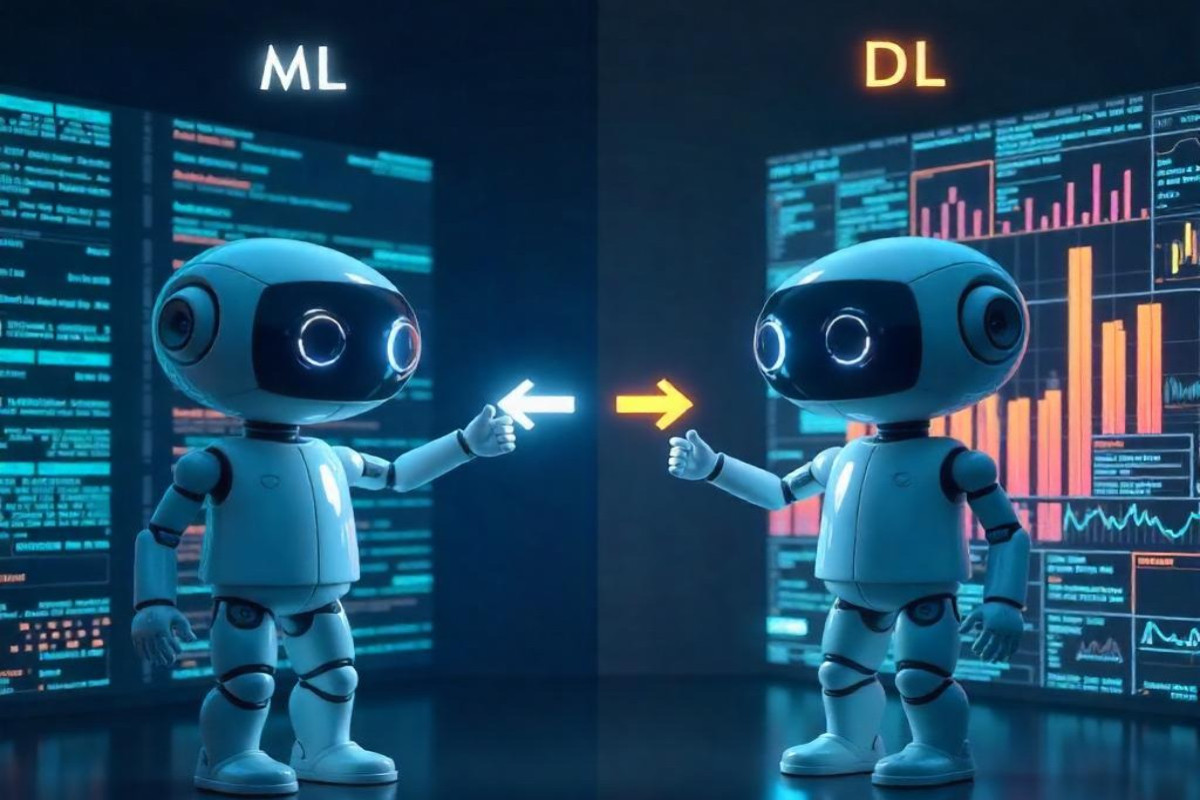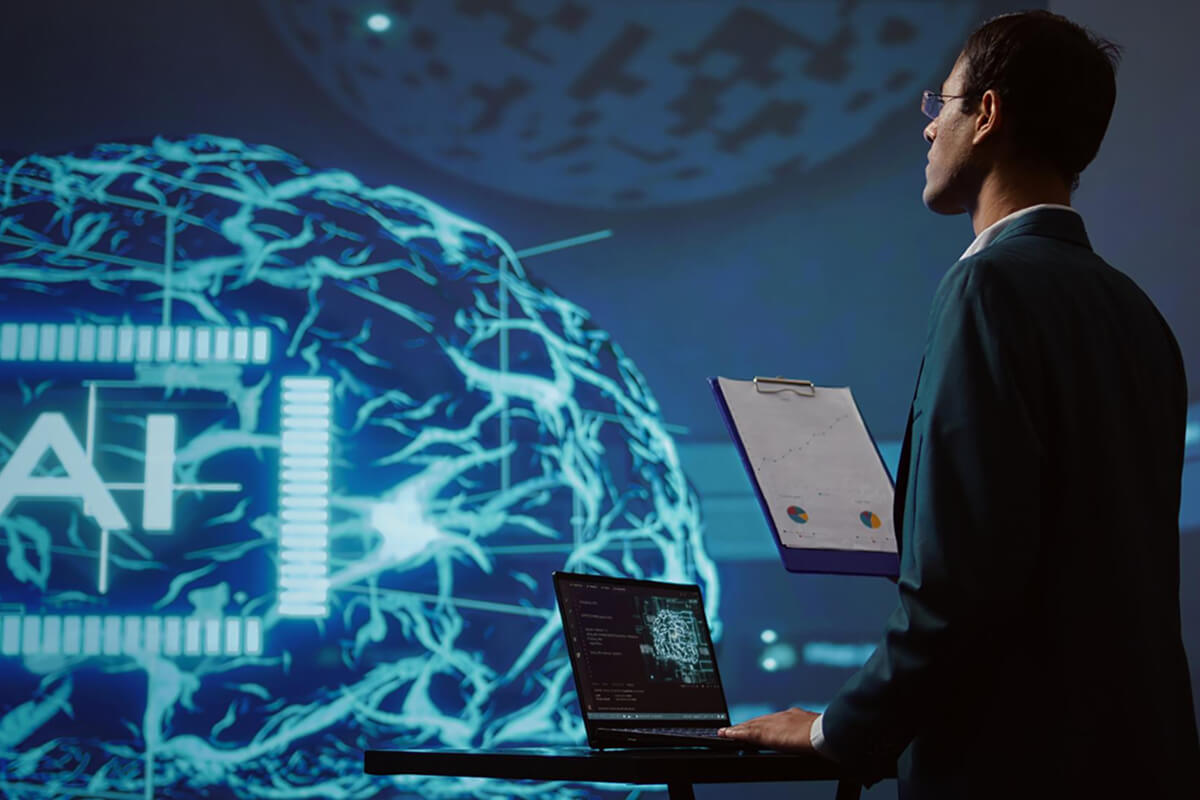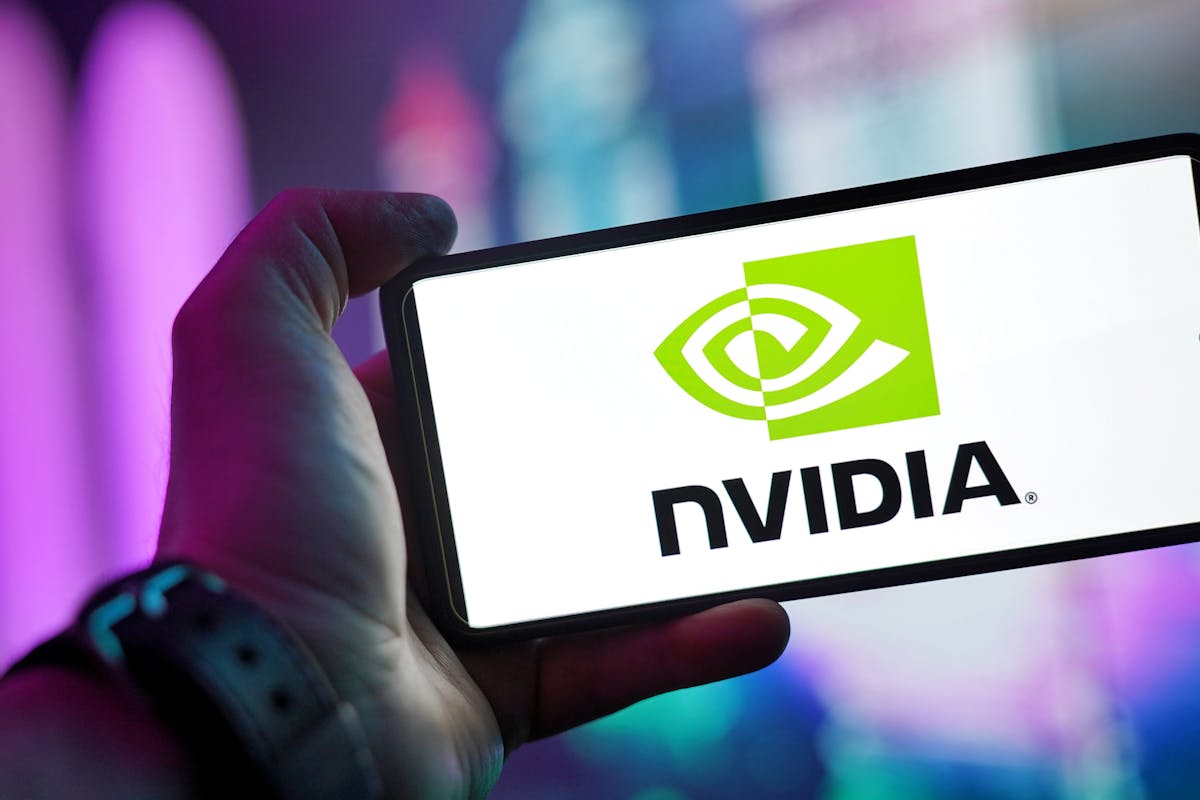Beginner’s Guide to Machine Learning vs Deep learning
1.Working
The field of computer science known as Artificial Intelligence (AI) is concerned with developing systems that can carry out tasks that ordinarily call for human intelligence. These tasks include making decisions, identifying faces or images, comprehending language, learning from data, and even resolving challenging issues. In contrast to traditional software, which adheres to preprogrammed instructions, artificial intelligence (AI) systems can learn and grow over time. AI is becoming the unseen layer that makes many of the technologies we use daily smarter, faster, and more intuitive, whether it’s voice assistants on your phone, facial recognition at office gates, or recommendation engines that suggest what to watch next.
Artificial Intelligence (AI) is simply software that can decide, predict, or create something as well as—or better than—a human would.
Where ordinary programs follow a fixed “if-this-then-that,” AI writes many of those rules for itself by discovering patterns in data.AI learns from your clicks, searches, and purchases to show what you’re likely to buy next.
1.1 How Machine Learning Works
Machine Learning is a very practical field of Artificial Intelligence with the aim to develop software that can automatically learn from previous data to gain knowledge from experience and to gradually improve its learning behaviour to make predictions based on new data (The grand challenges are in sense-making, in context understanding, and in decision making under uncertainty Machine Learning can be seen as the workhorse of AI and the adoption of data intensive Machine Learning methods can meanwhile be found everywhere, throughout science, engineering and business, leading to more evidence-based decision-making The enormous progress in Machine Learning has been driven by the development of new statistical learning algorithms along with the availability of large data sets and low-cost computation
A. Machine learning incorporates four steps: –
- Feature extraction
- Second, selection of corresponding machine learning algorithm
- Third, training and evaluation the data model’s efficiency
- Four, using trained model for prediction
B. Requirements to Create Good Machine Learning Systems:
- Data preparation capabilities
- Basic and Advanced algorithms
- Scalability
- Various processes i.e. Automation and Iterative
- Ensemble modelling
1.2 How Deep Learning Works
Deep Learning is a family of Machine Learning models based on deep convolutional neural networks having a long history Deep Learning is very popular today because they are achieving amazing results even at human level performance. A Deep Learning (DL) model is a type of Machine Learning model that uses neural networks with multiple layers (hence “deep”) to automatically learn patterns from large amounts of data, such as images, audio, and text — without manual feature engineering.
A Deep Neural Network consists of an input layer, Several hidden layers, and an output layer. Each layer includes several units called neurons. These neurons are also called as artificial neurons. A neuron receives several inputs, performs a weighted summation over its inputs, then the resulting sum goes through an activation function to produce an output
2. Key Differences
| Aspect | Machine Learning (ML) | Deep Learning (DL) |
| Short Definition | Algorithms that learn patterns from data using features. | A type of ML that uses neural networks to learn complex patterns automatically. |
| Subset | Parent | Subset of ML |
| Task type | Works well with text, tabular data, limited with audio | Best with images and audio, better in text id dataset is large. |
| How it Works | Extract features (e.g., word count) → Feed into model → Predict sentiment/class. | Feed raw image → CNN (convolutional neural network) learns features → Output (e.g., “cat”). |
| Example | Spam email detection using keywords or metadata. | Face recognition from images using deep CNNs. |
Conclusion
Artificial Intelligence (AI) is revolutionizing the way we interact with technology, making it smarter, faster, and more intuitive. From decision-making to image recognition, Artificial Intelligence systems can perform tasks that traditionally required human intelligence. Machine Learning (ML) and Deep Learning (DL) are key components of Artificial Intelligence, each with its unique strengths and applications.
Machine Learning focuses on developing algorithms that learn patterns from data, making it highly effective for tasks involving text and tabular data. Deep Learning, a subset of Machine Learning, excels in processing complex data such as images and audio through neural networks with multiple layers.
Together, Machine Learning and Deep Learning are transforming industries by enabling more accurate predictions, automated decision-making, and advanced problem-solving. While Machine Learning is versatile across various data types, Deep Learning shines in scenarios requiring intricate pattern recognition.
In essence, Artificial Intelligence, powered by Machine Learning and Deep Learning, is not just a technological advancement but a catalyst for human growth and innovation. By leveraging the strengths of both Machine Learning and Deep Learning, we can create systems that enhance our capabilities and drive progress in numerous fields.








